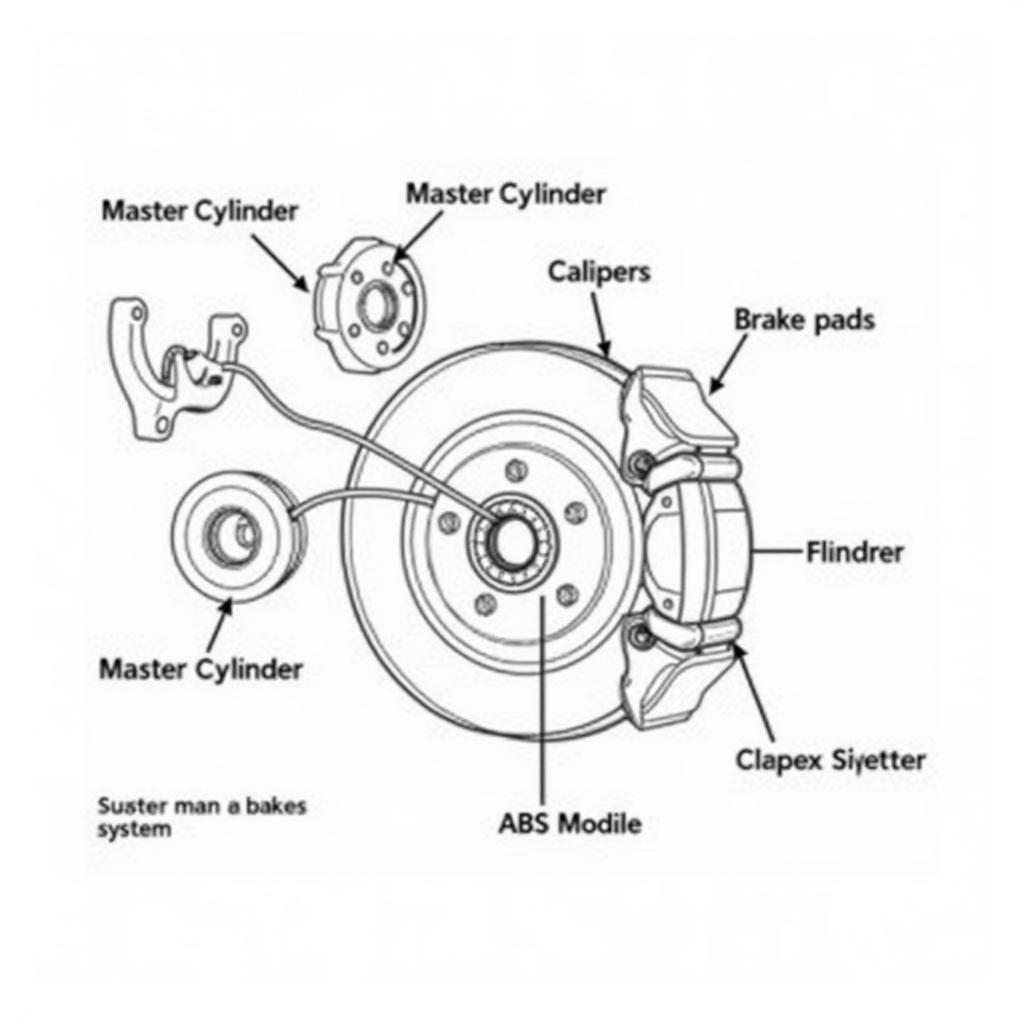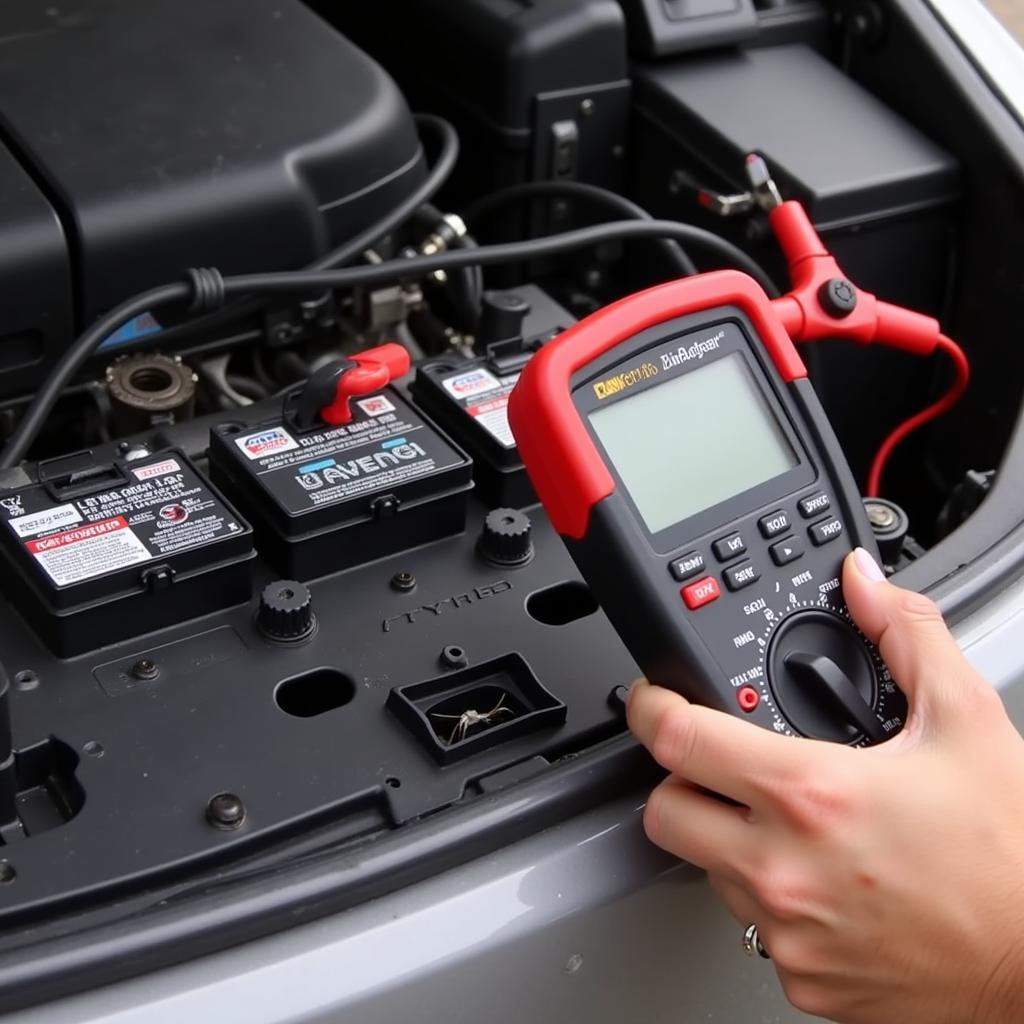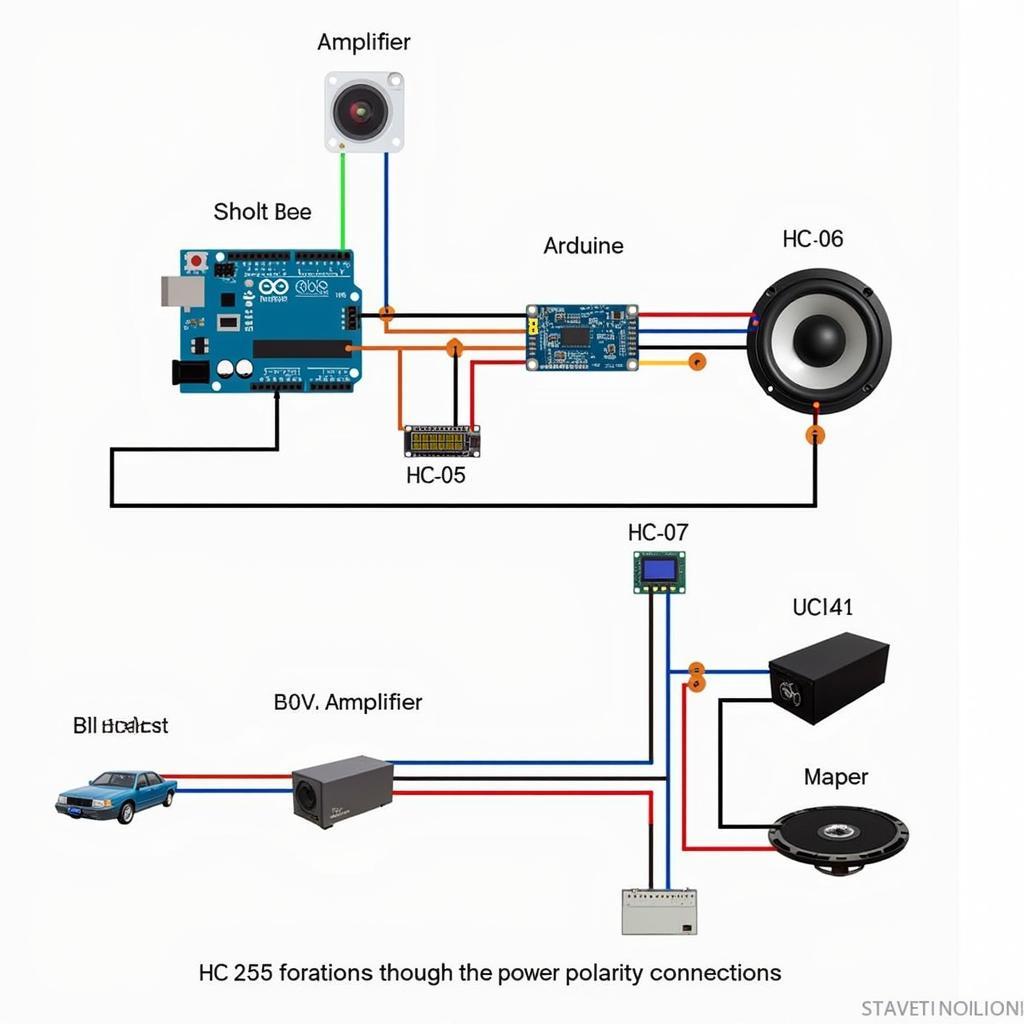The dreaded Honda Element brake warning light. It can illuminate your dashboard for a variety of reasons, leaving you wondering what’s wrong and what to do. This comprehensive guide will delve into the common causes of the brake warning light in Honda Elements, provide troubleshooting steps, and discuss potential solutions. Let’s get started.
Understanding Your Honda Element’s Brake System
The braking system in your Honda Element is a complex network of components working together to ensure your safety. Understanding its basic functions is crucial to diagnosing the cause of a warning light. The system includes the master cylinder, brake lines, calipers, rotors, and brake pads, all controlled by hydraulic pressure. Additionally, the Anti-lock Braking System (ABS), if equipped, adds another layer of complexity. Any fault within these components can trigger the warning light.
 Honda Element Brake System Components
Honda Element Brake System Components
Common Causes of the Brake Warning Light
The brake warning light can illuminate for several reasons, ranging from simple to complex. One of the most common culprits is low brake fluid. Over time, brake pads wear down, requiring more fluid to engage the brakes. This can lead to a low fluid level and trigger the warning light. Another common cause is a faulty parking brake switch. If the switch is stuck in the “on” position, even slightly, the light will remain on. More serious issues, like a malfunctioning ABS module or a leak in the brake lines, can also trigger the warning light and require immediate attention.
Did you know that something as simple as a loose brake fluid reservoir cap can also trigger the warning light? It’s true! The system is designed to be airtight, and any air entering the reservoir can affect the pressure and trigger the light. Check out this article on the brake light warning honda element 2003 for more specific information.
Troubleshooting the Brake Warning Light
Before rushing to the mechanic, there are several steps you can take to troubleshoot the brake warning light yourself. First, check the brake fluid level. Locate the brake fluid reservoir under the hood and check the fluid level against the minimum and maximum markings. If it’s low, top it off with the correct type of brake fluid. Next, check the parking brake. Ensure it’s fully released. If the light remains on, inspect the brake lines for any signs of leaks or damage. Any visible leaks require immediate professional attention.
When to Seek Professional Help
While some issues can be resolved with simple DIY fixes, others require professional expertise. If you’ve checked the brake fluid, parking brake, and brake lines, and the light persists, it’s time to seek professional help. Complex issues like a faulty ABS module or internal leaks require specialized diagnostic tools and knowledge. Ignoring a persistent brake warning light can lead to serious safety risks, so it’s always best to err on the side of caution.
For issues related to other Honda models, you might find these resources helpful: 2003 honda odyssey brake lamp warning light and 2017 honda accord abs brake traction steering warning lights issue.
“Regular brake inspections are crucial for maintaining a safe and reliable vehicle,” says automotive expert, John Smith, ASE Certified Master Technician. “Don’t wait for a warning light to illuminate before addressing potential brake problems.”
Remote Diagnostics and Software Solutions
In today’s technologically advanced world, remote diagnostics and software solutions play an increasingly important role in automotive repair. Remote diagnostics allow technicians to access your vehicle’s computer system remotely, identifying potential issues without physically inspecting the car. This can save time and money, especially for intermittent problems that are difficult to replicate in a shop setting. Furthermore, software updates and programming can often address software glitches or malfunctions within the brake system’s electronic control units.
The Future of Automotive Repair
As vehicles become increasingly complex, remote diagnostics and software solutions will become even more essential. Imagine a future where your car automatically alerts your mechanic of potential issues, allowing for proactive maintenance and preventing breakdowns. This is the direction the automotive industry is heading, and embracing these advancements can enhance the safety and reliability of your Honda Element.
This article about odyssey brake lamp warning light provides additional information on this topic. You can also refer to rear inside brake light warning 94 accord for related insights.
Conclusion
The Honda Element brake warning light is a crucial safety indicator that should never be ignored. By understanding its potential causes and following the troubleshooting steps outlined in this guide, you can effectively address many common issues. However, don’t hesitate to seek professional help when necessary, especially for complex problems requiring specialized knowledge and tools. Regular brake maintenance and embracing technological advancements in automotive repair are essential for ensuring the safety and longevity of your Honda Element.
FAQ
-
What does the Honda Element brake warning light mean? It indicates a potential issue within the braking system, ranging from low brake fluid to a faulty ABS module.
-
Can I drive my Honda Element with the brake warning light on? It’s not recommended. Driving with a brake problem can be dangerous.
-
How do I check my Honda Element’s brake fluid level? Locate the brake fluid reservoir under the hood and check the fluid level against the minimum and maximum markings.
-
What should I do if my Honda Element’s brake warning light stays on after adding brake fluid? Seek professional help. The problem may be more complex than low fluid.
-
Can remote diagnostics help fix my Honda Element’s brake warning light? Yes, remote diagnostics can identify software glitches or malfunctions within the brake system’s electronic control units.
-
How often should I have my Honda Element’s brakes inspected? At least once a year or as recommended in your owner’s manual.
-
What are some signs of a brake leak in a Honda Element? Visible fluid leaks near the wheels, a soft or spongy brake pedal, and a decreased braking performance.



